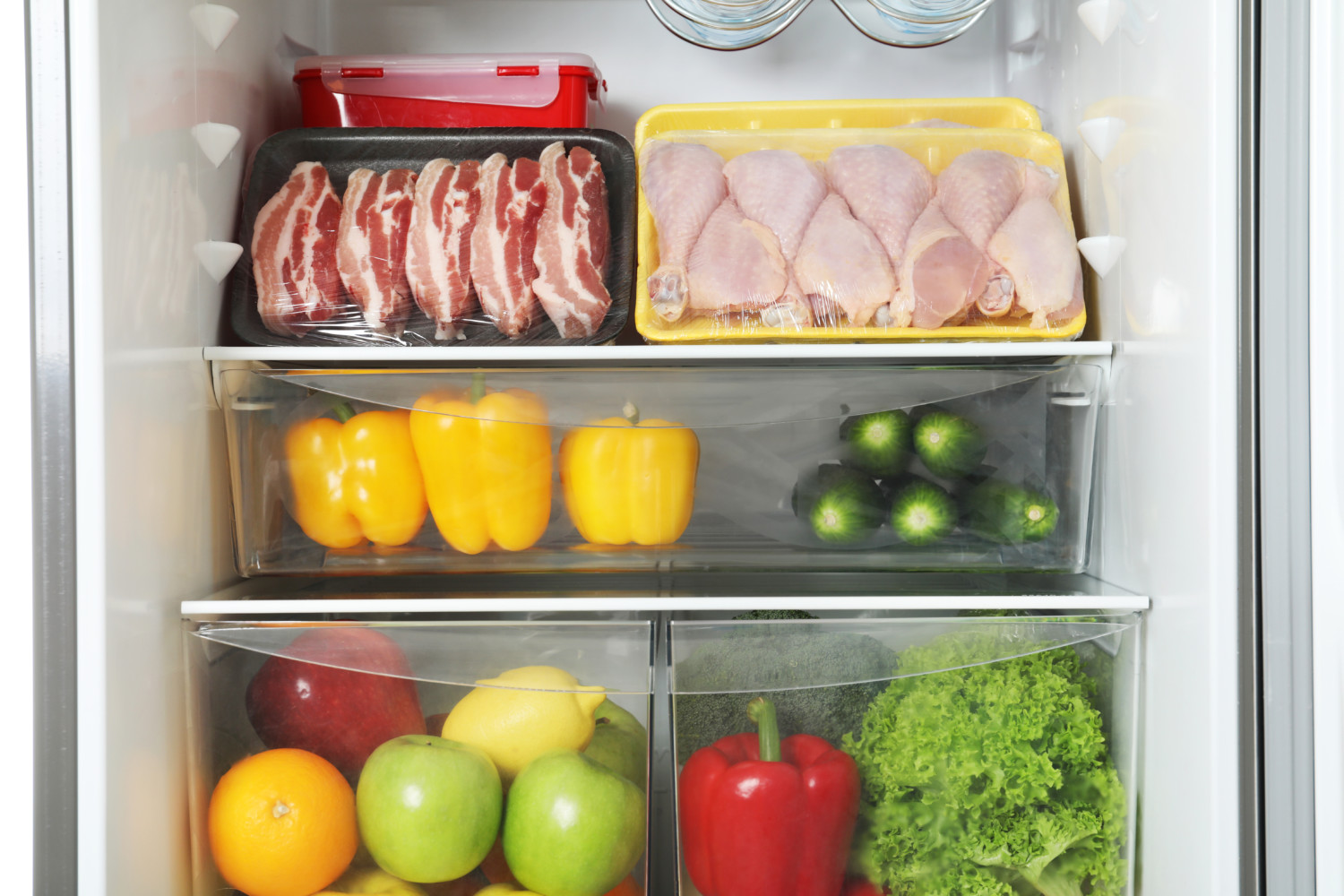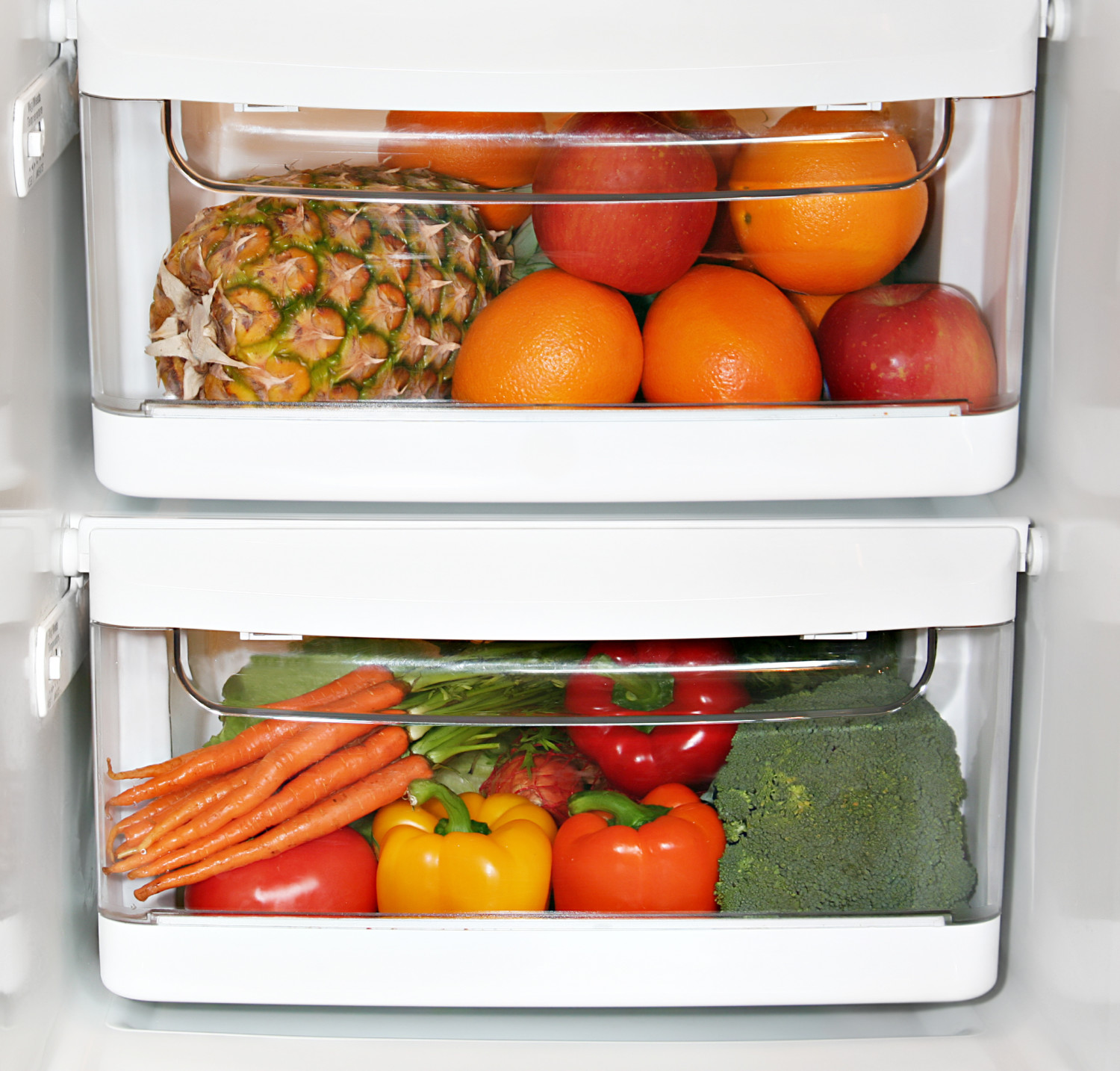You haul home groceries and start loading them into the refrigerator, moving around cartons and containers like a game of Tetris to make space. But did you know that there’s a whole science to organizing your fridge, and, when done correctly, you can keep your food fresh for longer?
Much of this has to do with how you sort produce in your crisper drawer and how you can optimize the humidity settings to prevent your leafy greens from wilting and your fruits and veggies from browning. (Yup, that means your apples and broccoli shouldn’t be cohabitating in the same drawer because they have different humidity needs!)
“The biggest mistake that people make when using their crispers is just stuffing them full of everything, and not paying close attention to what fruits and vegetables they’re putting next to each other,” says Megan Byrd, a registered dietitian who runs the food blog Oregon Dietitian. “This causes produce to go bad quickly and leads to more food waste.”
As it turns out, those humidity control dials on your crisper drawers can really come in handy. Here’s what you should know about getting the most out of your crisper drawer, plus some more fridge organization tips that will help you prevent food waste and store food like a kitchen expert.

Organizing Your Crisper Drawer
Putting away produce isn’t quite as simple as putting your fruits in one crisper drawer and your veggies in the other. Rather, it comes down to understanding the humidity needs of your fruits, veggies and herbs and sorting them appropriately.
Here’s a general rule: The high-humidity crisper drawer should be reserved for your produce that can wilt, like lettuce and fresh herbs, Byrd says. While fridge models vary, most have adjustable humidity settings on the drawers that allow you to move them between low and high to control the air flow. On the high-humidity setting, the window is closed which helps maintain the humidity needed to keep your greens crisp.
The low-humidity drawers are meant for things that can easily rot or mold, like mushrooms, avocados, pears, mangoes and other fruits, Byrd says. To put it another way, fruits that have skins should go in the lower-humidity drawer. On the low-humidity setting, the window to the crisper drawer is open, allowing moist air out.
Curious how humidity settings correlate with food spoilage? It comes down to ethylene. When some fruits and veggies reach maturity, they release ethylene, which promotes ripening. You want to make sure you’re not storing ethylene-producing fruits and veggies with those that are sensitive to the gas, as this will cause those foods to spoil more quickly, according to Produce for Better Health Foundation, a nonprofit that aims to increase fruit and veggie consumption.
To help you properly sort your produce, here’s which items should go in your high-humidity and low-humidity crisper drawers.
High-Humidity Crisper Drawers:
- Arugula
- Asparagus
- Bok choy
- Broccoli
- Brussels sprouts
- Cabbage
- Carrots
- Cauliflower
- Celery
- Chard
- Chicory
- Collards
- Cucumber
- Endive
- Green onion
- Green tomato
- Kale
- Leek
- Lettuce
- Mint
- Mushrooms
- Mustard greens
- Okra
- Parsnips
- Snow pea
- Spinach
- Summer squash
- Sweet pea
- Turnip greens
- Tomatillo
- Watercress
- Watermelon
Low Humidity Crisper Drawers:
- Apple
- Apricot
- Avocado
- Bananas that haven’t ripened
- Cantaloupe
- Fig
- Guava
- Honeydew melon
- Jackfruit
- Kiwifruit
- Mango
- Nectarine
- Passion fruit
- Peach
- Pear
- Plum
- Papaya
- Plantains

More Tips For Keeping Produce Fresh
Now that you’ve got crisper drawers down to a science, let’s dig into what produce doesn’t actually belong in the fridge at all, and that can fare better if you stash it in a cool pantry or leave it on your countertops.
First things first, Consumer Reports recommends keeping your refrigerator set at 37 degrees Fahrenheit. However, some fruits and veggies are sensitive to cold temps below 40 degrees Fahrenheit, and they do best if they’re kept in a cool part of the kitchen or pantry at 55 degrees Fahrenheit, according to the Old Farmer’s Almanac.
As an example, tropical fruits will best maintain their sweet flavors if you keep them out of the cold fridge (pineapples and bananas are accustomed to warm climates, after all!). The Old Farmer’s Almanac recommends storing bananas, avocados and pineapples at about 50 degrees Fahrenheit outside of the fridge.
For instance, cucumbers can be stored in the fridge for a few days, but will keep for longer in a cool spot in the kitchen. Eggplant stores best outside of the fridge because if it’s stored in the cold, it can develop brown spots after a few days.
Onions, garlic and shallots do best in a dry, cool ventilated space, stashed in mesh bags for ventilation, according to the Old Farmer’s Almanac. Don’t ever store onions near potatoes, though, because potatoes excrete moisture that will cause onions to spoil quickly.

Also, keep tomatoes out of the refrigerator or else you’ll risk them losing flavor and getting a mealy texture.
With these storage tips, your produce will thrive — and you may even trim down on your grocery bill as you waste less food!
This story originally appeared on Simplemost. Checkout Simplemost for additional stories.


